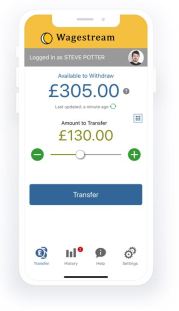For those of you who had the privilege of growing up in the ‘70s, you’re probably familiar with the amazing Schoolhouse Rock videos that were sandwiched in-between various cartoon and TV shows on Saturday mornings. These videos taught kids of the ‘70s about grammar (Conjunction Junction), science (Interplanet Janet), history (I’m Just a Bill) and math (My Hero, Zero). But I have to admit, my favorite of the 40+ short videos/songs happens to be the first one ever recorded (Three Is A Magic Number), and as crazy as it sounds, the song still runs through my head more frequently than you’d expect.
(Have a look/listen if you’re curious: https://www.youtube.com/watch?v=aU4pyiB-kq0)
Three also happens to be a magic number in designing a perfect business model. I’ve found myself time and time again asking about the same holy trinity of building blocks that define a business. When all three building blocks come together and work in-sync, amazing things can happen. When one building block is missing or yet to be cracked, I can’t help but feel uneasy and uncertain about the future of the business.
What am I looking for? In it’s most simple form, the business trinity that I obsess about is:
Product: Does the product seamlessly solve a profoundly painful problem through a process that’s intuitive and requires little/no guidance?
Pricing: Is there enough revenue to generate attractive returns while simultaneously seen as a bargain by the target audience?
Channel: Is there a channel of distribution that densely contains the target audience and through which awareness can be built at an extremely low cost?
These might seem like obvious criteria to an outsider, but I can truly say that only a fraction of a fraction of businesses that come across my desk can satisfy the business trinity.
To call out a few specifics that help explain the “why” behind my obsession:
- If a channel is chock full of prospective customers then the dollars that are put into the channel to build awareness educate the right audience.
The result: A high awareness/marketing dollar ratio
- If a prospective customer is experiencing a painful problem they’re motivated to solve it. There’s no such thing as inertia when it comes to pain so more times than not a prospective customer is thrilled when a solution is presented.
The result: A high consideration/awareness ratio
- If a prospective customer thinks of the solution as a bargain then pricing no longer becomes a barrier to the purchase decision.
The result: A high adoption/consideration ratio
What I can say is that when the business trinity comes together it’s almost a thing of magic. Growth is bountiful, happy customers come naturally and profits roll in. Check, check and check!
A perfect example of this is a company that QED is helping build in the UK called Wagestream (www.wagestream.co.uk). They’ve created a solution that allows employees to gain access to earned wages in advance of their next payday. The concept is simple and with 100% certainty satisfies the business trinity.
Product: Does the product seamlessly solve a profoundly painful problem through a process that’s intuitive and requires little/no guidance?
- 55% of UK families can’t cover a £250 unplanned expense
- In the UK, 85% of employees are paid once a month
- Using Wagestream, an employee can launch an app on their phone and with a single click of a button they can see and access earned wages in advance of their next paycheck
Pricing: Is there enough revenue to generate attractive returns while simultaneously seen as a bargain by the target audience?
- Wagestream is not a loan. No interest, no penalties, just a flat fee of £1.75 regardless of the amount being requested.
- In comparison, a typical payday advance in the UK costs £15-£25 for every £100 borrowed per month
Channel: Is there a channel of distribution that densely contains the target audience and through which awareness can be built at an extremely low cost?
- Employers are the natural distribution channel for the Wagestream solution. They’re willing to build awareness for the product at their own expense because it solves issues both for them and their employees.
- Based on a 2016 PWC survey, employees who are stressed about finances are five times more likely to take time off work to deal with personal issues
- According to the same survey, 46% of employees spend 3 or more hours a week at work dealing with financial issues
- US firms that implemented a similar model saw a 41% reduction in staff turnover from hourly employees and US firms typically pay their employees twice monthly vs. once a month in the UK
And when all aspects of a business align, everyone seems to notice. Wagestream has already been able to align with amazing distribution partners like Fourth (the leading global software provider for the leisure and hospitality industry) because the Wagestream solution just makes sense. It scratches the macro-itches of transparency and immediacy that consumers demand from just about everything they do in life. Providing a real-time view into earned wages and the financial freedom to choose when and how to get paid modernizes the relationship between employers and their employees. Employees will have less stress, be more productive, improve their service levels and stay longer with companies that offer this freedom. Everyone wins.

Product, pricing, channel. The business trinity at work. In full disclosure, Wagestream is still a very young company but QED’s expectations for the business are high and early results confirm our thesis that the product sells itself. So if you happen to know decision makers at UK based companies feel free to send them my way (or point them directly to the company). And the next time you stare at a business opportunity, I hope you start humming “Three Is A Magic Number” to yourself…..

Good & focused perspective. Thanks. (Also, Hanker for a Hunk o’ Cheese still haunts me).
LikeLike